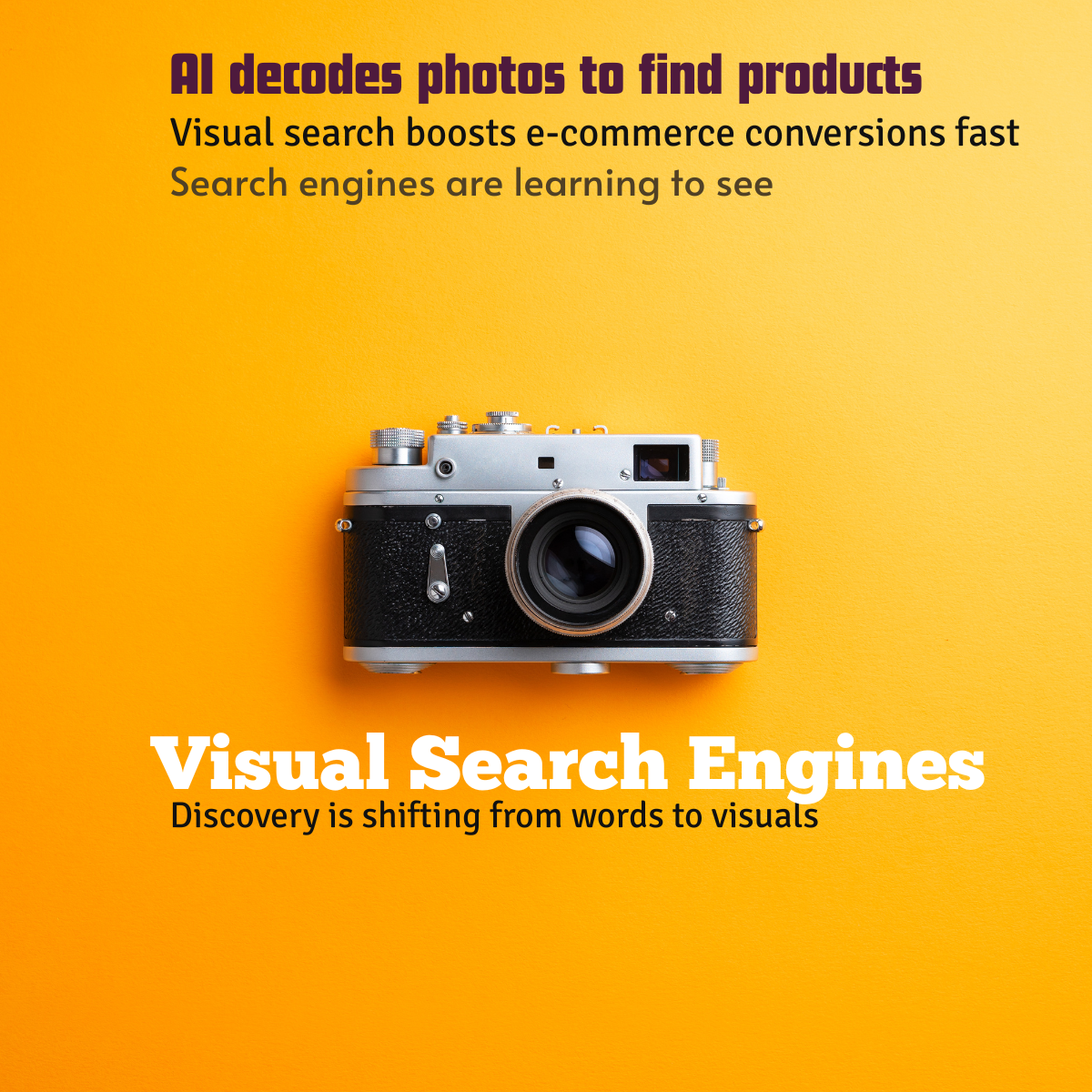Posted At: Aug 08, 2025 - 264 Views

Visual Search Engines: Let Users Search by Uploading Images
In a world overflowing with images, why should search be limited to words?
Traditional keyword-based search engines work well when users know the right words to describe what they’re looking for. But what if they don’t? What if they’ve seen a design, a product, a place — and they want to find it again using just an image?
That’s where visual search enginescome in.
From fashion to e-commerce to interior design, visual searchis transforming how people discover, compare, and shop. This blog explores how visual search engines work, why they matter, and where they’re headed next.
📸 What is a Visual Search Engine?
A visual search engineallows users to search using an image instead of text. Users can upload a photo or screenshot, and the system finds visually similar items or related content.
Unlike reverse image search engines that only find identicalimages (like Google Images), modern visual search systems use AI and computer visionto understand the content of the image and return results that match its visual features — colors, shapes, textures, patterns, and even context.
🧠 How Visual Search Works (Behind the Scenes)
Visual search is powered by a mix of advanced technologies:
1. Image Input & Preprocessing
Users upload an image or take a photo. The image is resized, cleaned, and standardized for analysis.
2. Feature Extraction
A deep learning model (typically a Convolutional Neural Network like ResNet or EfficientNet) analyzes the image and extracts high-dimensional visual features— think of this as a fingerprint of the image.
3. Vector Embedding
The features are transformed into a numerical representation called a vector embedding. Every image is mapped into this shared vector space.
4. Similarity Search
The engine compares this vector to a large database of indexed image vectors, using distance metrics (like cosine similarity or Euclidean distance) to find the most similar items.
5. Result Ranking & Filtering
The most relevant matches are ranked and displayed. Filters (e.g., price, size, brand) may be applied for product-focused applications.
🔍 Real-World Use Cases of Visual Search
🛍️ 1. E-Commerce & Fashion
- Pinterest Lens, Google Lens, Amazon StyleSnap— these tools let users find clothing, accessories, or decor based on a photo.
- Example: Upload a picture of a dress, and instantly find similar products to buy.
🏠 2. Home & Interior Design
- Snap a photo of a sofa or wallpaper pattern, and visual search suggests similar styles, brands, or where to buy.
📱 3. Mobile Visual Discovery
- Apps like Snapchat and Instagram use visual search to link real-world images to digital content.
- QR codes and AR experiences are enhanced by object detection and recognition.
🐾 4. Nature & Learning Apps
- Google Lens can identify plants, animals, artworks, and landmarks.
- Educational apps use visual search for instant knowledge — take a photo of a leaf, and it tells you the species.
🔧 5. Manufacturing & Industrial Parts Search
- Upload an image of a mechanical component to find replacement parts or compatible products, even without knowing the part name.
🛡️ 6. Security & Surveillance
- Visual recognition tools help identify people, objects, or license plates from CCTV footage using visual similarity.
🌟 Why Visual Search Matters
✅ Faster Discovery
People process images 60,000 times fasterthan text. Visual search removes friction from the discovery process.
✅ More Intuitive
Especially for users who struggle to describe what they’re looking for in words — visual search simplifies the experience.
✅ Higher Engagement & Conversions
In e-commerce, visual search can lead to:
- Higher product discovery
- Better product recommendations
- Improved user experience
- Increased conversion rates
✅ Better Personalization
Image-based queries reveal a lot about user preferences, enabling personalized recommendations based on color, style, and design.
🧠 AI Models Powering Visual Search
- Convolutional Neural Networks (CNNs)– for extracting features
- Siamese Networks– for similarity learning
- Transformers for Vision (e.g., ViT, CLIP)– combining image and text understanding
- FAISS / Annoy / ScaNN– tools for fast vector similarity search at scale
These systems are trained on massive datasets like ImageNetor OpenImages, and fine-tuned for specific domains (e.g., fashion, decor, food).
🚀 The Future of Visual Search
Visual search is evolving fast. What’s next?
🔁 Multimodal Search
Combining images andtext for even richer queries. Example: “Shoes like this 👟 but in red.”
🧑💼 B2B Visual Search Engines
Tailored for specific industries like medicine, manufacturing, and logistics.
🛍️ AR + Visual Commerce
Augmented reality + visual search will enable “point and buy” experiences — see a lamp at a friend’s house, point your phone, and buy it instantly.
🔍 Real-Time Visual Search
Integrated into smart glasses or wearable devices — enabling hands-free, real-time recognition.
🧩 Conclusion
Visual search engines are changing how we interact with the digital world. Instead of typing what we think we want, we can show what we actuallysee.
As AI and computer vision improve, visual search will become as common and powerful as text-based search — and in many cases, even better.
Whether you're a retailer, app developer, or just someone curious about the future of search, now is the time to look beyond keywords.
